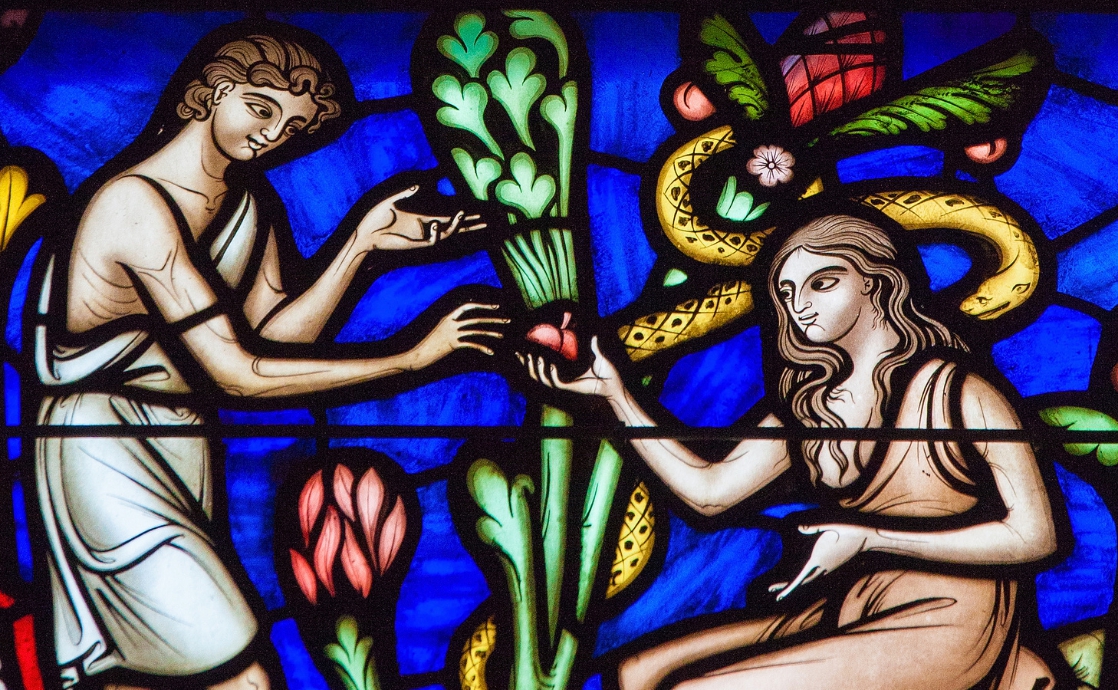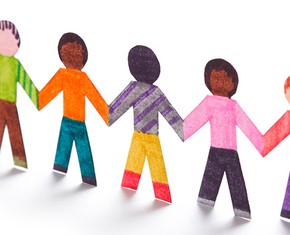The views expressed in our content reflect individual perspectives and do not represent the authoritative views of the Baha'i Faith.
How often have you learned some truth from a story, whether spoken, told, or acted?
Stories usually contain characters whose choices take them on some sort of quest. It seems that we humans are hardwired to relate to stories, because we easily remember what happens to the protagonist and wonder if we’d do the same.
This makes stories a powerful way to share important lessons.
Maybe that’s why religious texts are full of stories whose dramas help us recall underlying messages, like the first story in Genesis of Adam and Eve. The Qur’an tells a fuller version of the parable, scattered among at least five surahs.
RELATED: Were Adam and Eve Black?
We all know the basic story – or think we do. In the most familiar interpretation repeated over the years, the evil Eve tempted her mate Adam to eat of the fruit of the tree of the knowledge of good and evil, even though God had warned them against doing so. For centuries – since St. Augustine – people have interpreted that act to mean that Eve caused Adam’s “fall” from grace, leading God to banish them both from paradise. This literal interpretation has induced the idea of human nature as inherently evil – which has been particularly harmful to women, causing them to be seen not only as inferior but as temptresses out to entrap men.
Scroll through any search engine and you’ll find an amazing number of sites that repeat the same thing. You may even see a link to an exhibit at the Creation Museum in Kentucky with its life-sized model of the garden of Eden where, they explain, God created man and woman both on the sixth day. Dinosaurs (smallish ones) are depicted there as well. Clearly, such literal interpretations don’t align with the Baha’i principle that science and religion are two ways of looking at truth and must agree.
On the other hand, the notion that human communication is symbolic does align with science. Baha’u’llah even provides in his Book of Certitude some of the keys to understanding religious symbols and interpreting them in a logical, rational way. As Abdu’l-Baha pointed out in a talk he gave to a New York Bible class in 1912, “All the texts and teachings of the holy Testaments have intrinsic spiritual meanings. They are not to be taken literally.”
To demonstrate, Abdu’l-Baha presented a reasonable interpretation of Adam and Eve to pilgrims who visited him in the holy land. First, he pointed out that no rational intelligence can accept this creation story literally, which constrains us to think of it as symbolic. He explained:
Adam signifies the heavenly spirit of Adam, and Eve His human soul … The tree of good and evil signifies the human world; for the spiritual and divine world is purely good and absolutely luminous, but in the human world light and darkness, good and evil, exist as opposite conditions.
Here Abdu’l-Baha shared a basic Baha’i teaching, often overlooked, that the human spirit emanates from God, whereas the soul is its vehicle in the world of creation. He then explained the symbolism of the serpent as attachment to the human world:
When the soul and spirit of Adam entered the human world, He came out from the paradise of freedom and fell into the world of bondage. From the height of purity and absolute goodness, He entered into the world of good and evil … For the spirit and the soul of Adam, when they were attached to the human world, passed from the world of freedom into the world of bondage, and His descendants continued in bondage. This attachment of the soul and spirit to the human world … is the serpent which is always in the midst of, and at enmity with, the spirits and the descendants of Adam … For attachment to the world has become the cause of the bondage of spirits, and this bondage is identical with sin, which has been transmitted from Adam to His posterity. It is because of this attachment that men have been deprived of essential spirituality and exalted position.
RELATED: How Genesis Speaks to Us Right Now
In another talk he gave in Paris, Abdu’l-Baha said that when we aren’t open to “the blessing of the spirit” but turn our souls to our material side and don’t use our spiritual qualities, they become weak and eventually incapable; and if we exercise our material qualities alone, they become powerful and man can become more savage and malevolent than beasts.
Baha’is regard the history of religion through a lens of progressive revelation – that is, a sequence of Divine messengers delivering their teachings to humanity according to the capacity of people to be able to understand them along the path to spiritual maturity. In the Adam and Eve story, both Islam and the Baha’i Faith consider Adam to have been a messenger of God. In fact, Baha’is refer to the historical time period beginning with the revelation of Adam and ending with that of the Bab, Baha’u’llah’s predecessor, as the Adamic cycle. Remnants of the teachings of the most ancient messengers can be found in the book of Genesis in symbolic parables.
Humans have a bad habit of ignoring, rejecting, and even persecuting each Divine messenger, at least partially due to overlooking the symbolic nature of their teachings. Understanding the Adam and Eve story as one of the most ancient recorded religious parables raises two questions: What did our distant ancestors need to learn in order to understand the deep symbolism of spiritual teachings; and how would human progress have benefitted had we retained a deeper, more symbolic interpretation and memory of those teachings?
















Comments
Sign in or create an account
Continue with Googleor